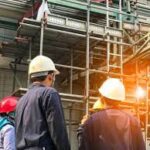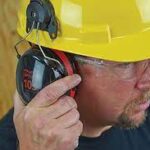
One of the biggest dangers in the workplace can be operating heavy machinery, specifically forklifts. According to OSHA, each year nearly 11% of forklifts will be part of some accident, resulting in about 100,000 injuries and 85 fatalities.
Some of the top causes of fatal accidents include:
§ Crushed by vehicle tipping over
§ Crushed between vehicle and a surface
§ Crushed between two vehicles
§ Struck or run over
§ Stuck by falling material
§ Fall from platform on the forks
For those who operate forklifts, there comes a great deal of responsibility to safely operate the equipment and prevent injury. Often, simple mistakes such as speeding, or driving on one side of the wheels, can lead to serious injuries. Most accidents involve workers, who were not properly trained, were not wearing protective equipment, or were just being careless. Sadly, these tragic accidents are avoidable with the proper training and policies in place.
Here are some tips to prevent injuries and ensure proper forklift safety:
Ensure Operators Have the Proper Certification and Training
OSHA says that 70% of all forklift accidents are avoidable, with the proper training. Anyone who operates a forklift must go through the proper certification and training. These machines can be very dangerous if not operated properly. Certification and training should include formal instruction in either lecture or computer formats, as well as practical on-the-job training. This includes demonstrations, exercises, and an evaluation of the employee operating the forklift at the workplace in which they will be working. After an employee completes certification, their performance should be continually monitored. If they cannot safely operate their vehicle, or if they start using a new vehicle, recertification is required. Otherwise, recertification for all operators should take place every three years, from the initial certification date.
Properly Maintain and Check Equipment
It is extremely important to perform regular maintenance on forklifts and ensure they are in proper working condition. A great way is to put together a daily inspection checklist.
Below are some things to look for:
§ Check to make sure the horn is working and sound the horn at intersections and wherever vision is obstructed
§ Check for hydraulic leaks in the master or elsewhere as this can cause slipping hazards or lead to hydraulic failure
§ Make sure fuel connections are tight and that battery terminals are covered
§ Remove lint, grease, oil or other material from forklift that could catch fire
§ Check to see if sparks or flames come out of the exhaust system
§ Look for signs of overheating from the engine. Common causes of overheating include, low coolant, clogged radiator screens, pedals that are out of adjustment, clogged radiator hoses and broken fan blades
§ Check that tires are at the proper pressure and show no signs of damage. Low pressure in tires can cause a forklift to tip or fall with a heavy or high load
§ Run through all of the controls such as lift, lower and tilt, to make sure they are working properly
§ Check for deformation or cracks in the forks, mast, overhead guard or backrest
§ Ensure steering is working properly, and that lights are operating if working at night or in dark locations
§ Check that the brakes stop smoothly and reliably, and that the parking brake can hold the forklift on an incline
§ Check that seat belts are working and that the load capacity plate is readable
Implement a Comprehensive Forklift Safety Policy
In addition to providing training and conducting maintenance, you should develop a forklift safety policy for your workplace. This consists of rules and policies that outline and define safe and proper operation of forklifts. Some rules for the operator include, limiting the speed of the forklift, not overloading the vehicle in a way that restricts their view and ensuring loads are stable and secure.
Non-operators should also be aware of potential dangers. They should maintain a safe distance from forklifts when possible and not walk near or under raised forks. It is a good idea to designate a walkway to keep forklifts and pedestrians separated.
Provide the Proper PPE
A last step to protect your workers and prevent forklift accidents, is to provide the proper protective equipment (PPE). Operators should wear a hard hat, safety shoes and hi-visibility jackets. Additionally, they should avoid wearing loose fitting clothing, which can catch onto machinery. If a forklift requires maintenance, the employee performing this job should wear the proper protective gear to avoid injury.


